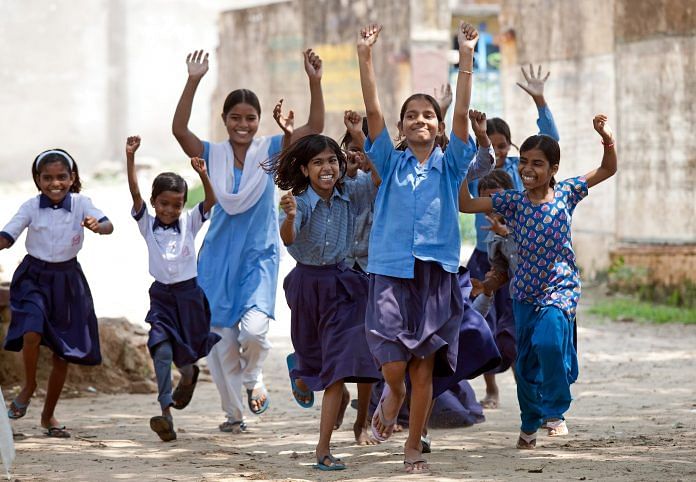The Sarva Shiksha Abhiyan turned out to be the Centre’s most successful school education scheme. It became the tool to implement the Right to Education Act.
New Delhi: Remember the song ‘School chalein hum’? It got a lot of airplay on radio and television in the early years of this millennium, and got ingrained in the public consciousness.
It was the theme song for the government’s school education scheme, Sarva Shiksha Abhiyan (SSA), which was launched by Atal Bihari Vajpayee’s NDA government in 2001.
Possibly the central government’s most successful school education scheme, the SSA also became the tool for the implementation of the Right to Education Act, which has helped push elementary education in India.
Also read: What Vajpayee & Manmohan Singh said in the last Independence Day speeches of their terms
The intent
The policy was intended to make sure that no child remains out of school; that every child in the age group of 6-14 years gets free and compulsory education. However, there was another motive behind it.
“The SSA was as much an education policy as it was a political move from the central government. It wanted to make sure that the Centre also has some say in education. Before the SSA, states were managing education on their own,” said an official in the HRD Ministry who has worked on the scheme.
Till the Right to Education Act was passed in 2009, the scheme ran like any other government scheme. But when Manmohan Singh’s UPA government used the SSA as a tool to implement the act, the number of school-going children increased to 19.67 crore in 2015-16. The number of schools also significantly went up from around 2 lakh in 2009-10 to more than 10 lakh.
Why was it a success?
Asked why the SSA was such a success, the HRD ministry official said: “There was a provision to check dropout rates in the school — the government made sure students received free books and uniforms. While free books were given to all students, uniforms were only given to girls and students from the SC/ST and minority categories, the ones that need more effort to be retained. Then, RTE made sure that government schools are constructed every 2 km. All these factors contributed to the success of the scheme.”
Also read: Nehru is the greatest PM India has had, Vajpayee an economic failure and Rao the worst
At present, there is no other scheme for improving the enrolment level of children at school level. SSA is now part of a larger scheme called Samagra Shiksha Abhiyan, which has merged the SSA, Rashtriya Madhyamik Shiksha Abhiyan and Teacher Education. While the purpose of SSA was to increase enrolment, the integrated scheme focuses more on quality of education.







Nonsense